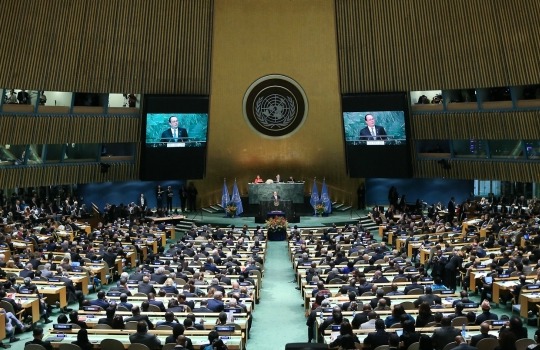
This Paris Agreement galvanises over 150 countries. Signatories under pressure to manage the C02 footprint, fine-tune adaptation strategies, and reduce the reliance on fossil fuels. Governments and industry also fast-track investments in clean energy sources.
The Australian government has moved to combat climate change under a Paris Agreement that was signed off in New York this week. This agreement sees Australia ramping up its investments in clean energy sources, and tackling concerns that the country’s C02 footprint is one of the highest for an industrialised economy. The impact of climate change on the Great Barrier Reef also comes under the spotlight.
Under the agreement, Australia will revisit its investments in low-carbon energy sources, and plan for alternatives to fossil fuels and coal. The agreement provides for five-yearly reviews of national targets. This is underpinned by a rules-based system that assesses whether countries are meeting their commitments.
Federal Minister for Environment, Greg Hunt, says the Paris Agreement is a turning point in the transition to a lower-emissions global economy. He adds that Australia wants to play “its part to tackle climate change with effective policies to cut emissions by 26 to 28 per cent below 2005 levels by 2030.”
Among recent initiatives, the Australian government has joined the Mission Innovation initiative, and is doubling its investments in clean energy research and development over the next five years. The administration has also earmarked $1 billion for the Clean Energy Innovation Fund. This fund supports emerging technologies that help R&D partners move from the demonstration to deployment and commercialisation stages.
Australia is also working with a range of partners through the $1 billion climate finance commitment, as well as the Asia-Pacific Rainforest Partnership, and an International Partnership for Blue Carbon and the Montreal Protocol.
Latest estimates from the Department of the Environment note that Australia is “on track” to beat the 2020 target by 78 million tonnes of emissions. This is a 50 million tonne improvement on the last estimate in December 2015.
Dangers to the Great Barrier Reef
The Turnbull government has allocated another $11 million investment for new projects to improve the health and resilience of the Great Barrier Reef. This investment is intended to help the Reef withstand a highly-volatile climate change and the stresses that are being placed on the Reef and its surrounds. The continued change in climate has exacerbated a rise in temperature for high-sea surfaces, while escalating bleaching in and around the corals. The impact of this bleaching is profound for aready-endangered coral flora, fauna, and marine life.
A recent documentary by the renowned science and TV commentator, Sir David Attenborough warns that the Great Barrier Reef is in grave danger. The twin perils have been brought by climate change, and an increase in the temperature of the ocean and in its acidity. These changes threaten the very existence of the Reef, unless immediate action is taken by stakeholders across government, industry, science and education.
To protect the Reef, the Australian government is allocating:
- $4.8 million to improve the quality of water entering the Great Barrier Reef by facilitating the adoption of best-practice management in agriculture.
- $3.3 million to enhance farm management practices by improving nutrient and chemical management among early adopter sugar cane growers.
- $3.2 million for improve grazing land management to reduce erosion losses to the Reef.





